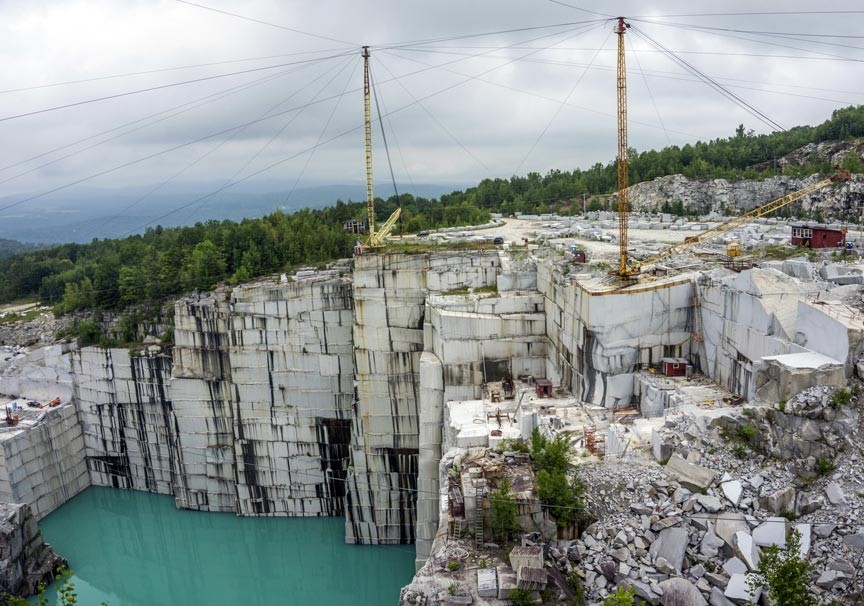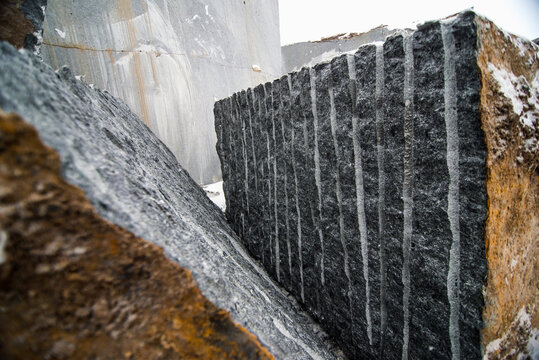The Hidden Treasures: Discovering Granite Quarries in South Africa
The Hidden Treasures: Discovering Granite Quarries in South Africa
Blog Article
Revealing the Mysteries of Granite Quarrying: Where Stamina and Beauty Meet
The world of granite quarrying is a world where the raw toughness of nature merges with human artistry to create structures that stand the examination of time with an air of sophistication. From the depths of quarries to the precise sprucing up in workshops, the procedure of changing granite into building marvels is an intricate dance of practice and technology. As we peer into the depths of this ancient craft, we start to discover the covert complexities that shape the extremely significance of our constructed atmosphere.
The Origins of Granite Quarrying
In the record of building background, the origins of granite quarrying are shrouded in a tapestry of old craftsmanship and geological marvels. Dating back to ancient Egypt and Mesopotamia, the removal of granite from quarries noted the beginning of a trip that would at some point bring about the development of some of the world's most legendary structures.
Granite quarrying's origins can be traced to the experienced craftsmens that identified the rock's toughness and aesthetic allure. Via a combination of primitive tools and large determination, these very early quarry workers unearthed granite blocks that would certainly come to be the structure blocks of human beings.
As civilizations advanced, so did the methods of quarrying granite. The Romans, renowned for their engineering expertise, developed sophisticated approaches for extracting granite to build monuments, temples, and roadways that stood the examination of time.
The legacy of these ancient quarrying techniques continues to shape contemporary design, with granite staying a symbol of strength and sophistication in building tasks around the world. (granite quarries in south africa)
Devices of the Quarrying Profession
The advancement of granite quarrying techniques from ancient worlds to modern times highlights the crucial role played by the tools of the quarrying profession in forming the sector's methods. In ancient times, quarrying devices were simple, often including blades, hammers, and wedges made from products like bronze or iron. These tools called for significant workforce and time to essence granite blocks from quarries.

Furthermore, the intro of pneumatically-driven tools and high-powered equipment has actually substantially lowered the physical labor called for in quarrying procedures, boosting worker security and performance. As the quarrying industry proceeds to introduce, the devices of the profession remain at the center of driving progress and forming the future of granite removal.
Removing Blocks of Granite
Making use of precision machinery and advanced strategies, the extraction of granite blocks from quarries has come to be a sophisticated process in the modern quarrying market. The initial action includes identifying the area and dimension of the granite deposit to determine the most efficient removal technique. As soon as click now a suitable site is picked, the extraction process starts with the exploration of openings for the positioning of dynamites. Controlled blowing up methods are then used to break apart the granite into manageable sections.

Polishing and Finishing Techniques
To attain a perfect surface on granite blocks, knowledgeable craftsmens utilize a series of thorough sprucing up and completing techniques. After the first extraction and forming processes, the granite obstructs go through a comprehensive sprucing up phase to improve their all-natural elegance and sturdiness. One usual method utilized in polishing granite is diamond abrasion, where industrial rubies are made use of to grind and brighten the rock to a smooth surface. This process not just produces a shiny surface area but also makes certain harmony in color and texture across the granite block.
In addition to link sprucing up, completing methods are used to additional improve the granite's appearance. By thoroughly selecting and applying these brightening and finishing techniques, artisans can change raw granite obstructs right into elegant pieces that display both stamina and sophistication.

Ecological Effect and Sustainability
With the expanding emphasis on ecological consciousness in the industry, granite quarrying techniques are progressively scrutinized for their effect on natural deposits and long-term sustainability. Quarrying for granite can have considerable environmental implications. The removal procedure often includes using hefty equipment, explosives, and big quantities of water, resulting in environment destruction, soil disintegration, and water air pollution. Additionally, the transport of granite from quarries to refining centers generates carbon discharges, even more adding to environmental deterioration. granite quarries in south africa.
To minimize these impacts and guarantee sustainability in granite quarrying, market stakeholders are embracing different procedures. Applying innovative modern technologies to reduce energy consumption and water usage, reclaiming quarried YOURURL.com land for ecological remediation, and promoting responsible sourcing techniques are some approaches being used. In addition, qualifications such as the Woodland Stewardship Council (FSC) and the Management in Power and Environmental Style (LEED) assistance consumers identify eco-friendly granite items.
Conclusion
Finally, granite quarrying is a procedure that requires specialized devices and methods to extract blocks of granite and brighten them to a high level of finish. While the ecological effect of quarrying can be significant, initiatives are being made to improve sustainability techniques in the market. Overall, granite quarrying is a fragile balance in between utilizing the toughness and sophistication of this natural stone while minimizing its effect on the environment.
Report this page